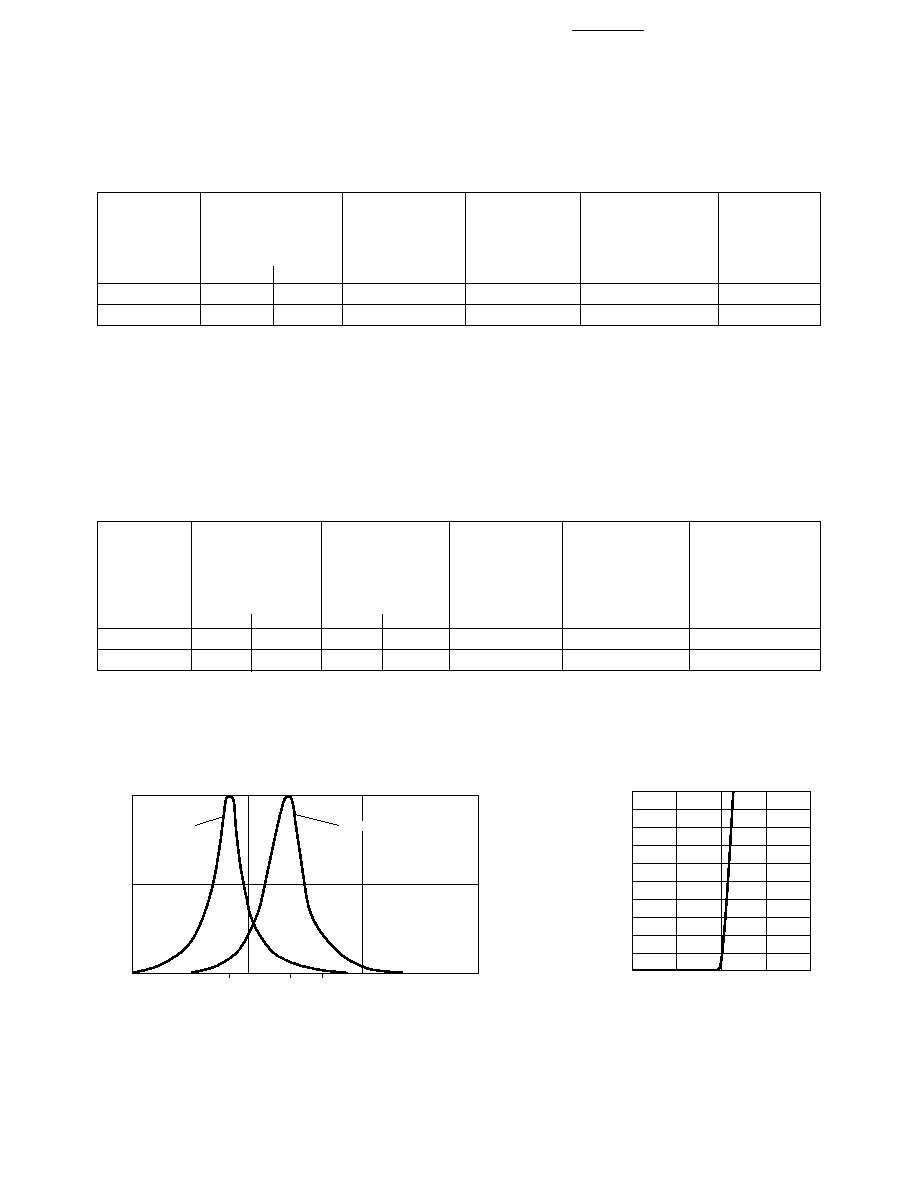 | –≠–ª–µ–∫—Ç—Ä–æ–Ω–Ω—ã–π –∫–æ–º–ø–æ–Ω–µ–Ω—Ç: HLMA-KL00 | –°–∫–∞—á–∞—Ç—å:  PDF PDF  ZIP ZIP |

Description
These untinted, non-diffused, solid
state lamps utilize the latest
absorbing/transparent substrate
aluminum indium gallium phos-
phide (AlInGaP) LED technology.
These materials have a very high
luminous efficiency, capable of
producing high light output over a
wide range of drive currents. In
addition, these LED lamps are at
wavelengths ranging from amber
to reddish orange.
Features
∑ Outstanding LED Material
Efficiency
∑ High Light Output over a
Wide Range of Currents
∑ Low Electrical Power
Dissipation
∑ Colors: 590/592 nm Amber,
615/617 nm Reddish-Orange
Applications
∑ Outdoor Message Boards
∑ Safety Lighting Equipment
∑ Signaling Applications
∑ Emitter for Emitter/
Detector Applications
∑ Changeable Message Signs
∑ Portable Equipment
∑ Medical Equipment
∑ Automotive Lighting
∑ Alternative to Incandescent
Lamps
SunPower Series
HLMA-KL00 Series
HLMA-KH00 Series
T-1 (3 mm), High Performance
AlInGaP LED Lamps
Technical Data

2
NOTES:
1. ALL DIMENSIONS ARE IN MILLIMETERS (INCHES).
2. THE LEADS ARE MILD STEEL, SOLDER DIPPED.
3. AN EPOXY MENISCUS MAY EXTEND ABOUT 1 MM (0.040")
DOWN THE LEADS, UNLESS OTHERWISE NOTED.
Package Dimensions
Absolute Maximum Ratings at T
A
= 25
∞
C
DC Forward Current
[1,4,5]
............................................................ 50 mA
Peak Forward Current
[2]
............................................................ 200 mA
Time Average Input Power
[2]
.................................................... 103 mW
Transient Forward Current
[3]
(10
µ
s Pulse) .............................. 500 mA
Reverse Voltage (I
R
= 100
µ
A) ......................................................... 5 V
Operating Temperature Range ........................................... -40 to 100
∞
C
Storage Temperature ......................................................... -40 to 100
∞
C
Junction Temperature ................................................................... 110
∞
C
Solder Temperature ............................................... 260
∞
C for 5 seconds
[1.59 mm (0.06 in.) below seating plane]
Notes:
1. Derate linearly as shown in Figure 4.
2. Any pulsed operation cannot exceed the Absolute Max Peak Forward Current or the
Max Allowable Time Average Power as specified in Figure 5.
3. The transient peak current is the maximum nonrecurring peak current the device can
withstand without damaging the LED die and wire bonds.
4. Drive Currents between 10 mA and 30 mA are recommended for best long term
performance.
5. Operation at currents below 10 mA is not recommended, please contact your Agilent
sales representative.
3.18 (0.125)
2.67 (0.105)
24.10
(0.95)
MIN.
1.27
(0.050)
NOM.
1.02
(0.040)
6.35 (0.250)
5.58 (0.220)
0.45
(0.018)
SQUARE
NOMINAL
CATHODE
2.54
(0.100)
NOM.
NOM.
4.70 (0.185)
4.19 (0.165)
3.43 (0.135)
2.92 (0.115)

3
Speed of
Forward
Reverse
Capacitance
Response
Voltage
Breakdown
C (pF)
s
(ns)
Part
V
F
(Volts)
V
R
(Volts)
V
F
= 0,
Thermal
Time Constant
Number
@ I
F
= 20 mA
@ I
R
= 100
µ
A
f = 1 MHz
Resistance
e
-t/
s
HLMA-
Typ.
Max.
Min.
Typ.
Typ.
R
J-PIN
(
∞
C/W)
Typ.
KL00
1.9
2.4
5
25
40
290
13
KH00
1.9
2.4
5
25
40
290
13
Optical Characteristics at T
A
= 25
∞
C
Luminous
Color,
Intensity
Peak
Dominant
Viewing Angle
Luminous
Part
I
V
(mcd)
Wavelength
Wavelength
2
1
/
2
Efficacy
Number
@ 20 mA
[1]
peak
(nm)
d
[2]
(nm)
Degrees
[3]
v
HLMA-
Min.
Typ.
Typ.
Typ.
Typ.
(lm/w)
KL00
35
200
592
590
45
480
KH00
35
200
621
615
45
263
Notes:
1. The luminous intensity, I
v
, is measured at the mechanical axis of the lamp package. The actual peak of the spatial radiation pattern
may not be aligned with this axis.
2. The dominant wavelength,
d
, is derived from the CIE Chromaticity Diagram and represents the color of the device.
3.
1/2
is the off-axis angle where the luminous intensity is 1/2 the peak intensity.
Electrical Characteristics at T
A
= 25
∞
C
Figure 1. Relative Intensity vs. Wavelength.
Figure 2. Forward Current vs.
Forward Voltage, AS-AlInGaP.
I F
≠ FORWARD CURRENT ≠ mA
1.0
0
VF ≠ FORWARD VOLTAGE ≠ V
2.5
200
120
80
1.5
2.0
160
3.0
40
20
60
100
140
180
WAVELENGTH
550
RELATIVE INTENSITY
600
700
650
AMBER
1.0
0.5
0
REDDISH-ORANGE
594
621
630

Figure 3. Relative Luminous Intensity
vs. Forward Current. Derating Based
on T
J
MAX.
20
T
A
≠ AMBIENT TEMPERATURE ≠ ∞C
5
15
35
0
50
30
45
10
0
50
I
F
≠ FORWARD CURRENT ≠ mA
10 20
40
90
60
25
30
40
70 80
100
R
= 618 ∞C/W
J-A
R
= 412 ∞C/W
J-A
50
40
20
10
0
50
100
I
AVG
≠ AVERAGE CURRENT ≠ mA
I
PEAK
≠ PEAK FORWARD CURRENT ≠ mA
150
30
200
f > 100 Hz
f > 300 Hz
f > 1 KHz
Figure 4. Maximum Forward Current
vs. Ambient Temperature. Derating
Based on T
J
Max = 110
∞
C.
Figure 5. Maximum Average Current
vs. Peak Forward Current.
2.5
2.0
1.5
1.0
0.0
0
10
50
20
40
30
I
F
≠ DC FORWARD CURRENT ≠ mA
RELATIVE LUMINOUS INTENSITY
(NORMALIZED AT 20 mA)
0.5
≠ ANGULAR DISPLACEMENT ≠ DEGREES
NORMALIZED INTENSITY
1.0
0.9
0.8
0.7
0.6
0.5
0.4
0.3
0.2
0.1
0
100∞ 90∞ 80∞ 70∞ 60∞ 50∞ 40∞ 30∞ 20∞ 10∞
0∞
10∞ 20∞ 30∞ 40∞ 50∞ 60∞ 70∞ 80∞ 90∞ 100∞
Figure 6. Normalized Luminous Intensity vs. Angular
Displacement.
www.semiconductor.agilent.com
Data subject to change.
Copyright © 1999 Agilent Technologies, Inc.
Obsoletes 5963-2323E (4/96)
5968-1439E (11/99)



